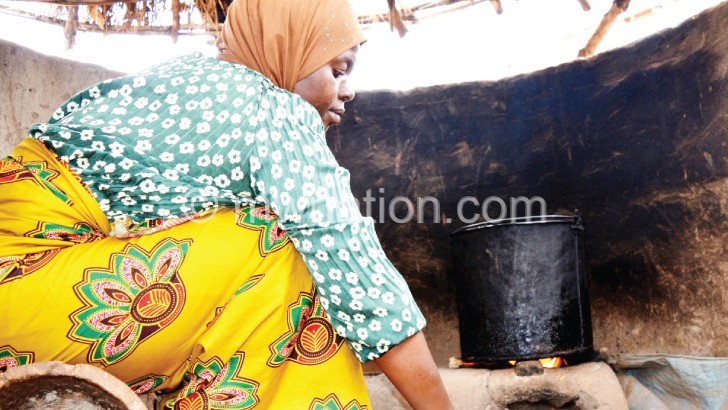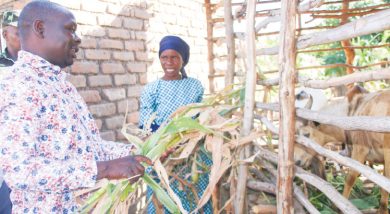Healing Lingamasa to save Shire River
Seventy community members from Mangochi made an all-important trip to the country’s power generation station, Nkula. This was in 2015 and the objective was to understand the source of electricity and its intricacies.
Senior Chief Jalasi led the team comprising 20 group village heads (GVHs) under his jurisdiction, lead farmers and area development committee members from the area.
Moving around Nkula, appreciating how electricity is generated and the role of Shire River in the process was all fun, recalls Senior GVH Balakasi, one of the chiefs on the trip.
But one incident sucked out all the fun. It left them speechless and deeply concerned.

“The sight of tonnes of silt and debris choking the power generation process shocked us,” says Balakasi. “We were told that all that waste comes from the upstream of the river.”
As they watched an excavator hopelessly scooping the debris to create breathing space for the labouring power generating engines, they knew that some of the waste could be from Mangochi, Lingamasa River to be specific.
Lingamasa River is one of Shire’s big tributaries on the upper region and its catchment is in Senior Chief Jalasi’s area, surrounded by the 20 GVHs who were on this tour.
The trip became a turning point for over 6 000 households in Senior ChieJalasi’s area who thought of intervening to conserve the environment.
“We were deeply troubled and when we returned home, nothing mattered more than protecting Lingamasa catchment area to keep sedimentation in control,” Balakasi says.
Such is how Assemblies of God (AG) Care introduced its project in Jalasi’s area in December 2015, targeting over 6 000 households in 20 GVHs with funds from the Millennium Challenge Account (MCA).
The project aimed at enhancing livelihoods and resilience of households in the catchment of Lingamasa River, Upper Shire, according to Aggrey Mfune, coordinator for the project.
Its scope centred on up-scaling activities that were thematically addressing environment and natural resources management, social and gender empowerment.
With 70 ambassadors leading the activities, it was not difficult for the targeted households to grasp the concept of the project’s interventions.
Estere Solomon, a resident of Kamwendo Village in the district, was one of the people to benefit from the shared knowledge and experience imparted by those who visited Nkula Power Station.
“Their stories reminded me of how our own three big gullies that ran from Chigombampini Mountain down into the village caused havoc every time it rained. Water washed through the village, sweeping away all the debris and soils from upland,” says Solomon.
The gullies emptied their load into Lingamasa River and so did many such gullies around the river’s catchment.
Under the project, residents of Kamwendo Village mobilised themselves and started to create check-dams across the gullies right from uphill down to the village.
“We used rocks and barriers woven from bamboo and sometimes we planted vetiver grass and banana suckers in the gullies to reducewater speed,” she says.
All the GVHs replicated these efforts since 2015 and now the three ‘notorious’ gullies of Kamwendo Village and most of the gullies in Senior Chief Jalasi’s area have completely been leveled.
AG Care also mobilised six primary schools and one community day secondary school in Jalasi where learners have reclaimed gullies and they have also created school woodlots.
The project has also registered some achievements in other areas such as Malekano Village. Here, the community has produced a vetiver grass nursery stretching some five hectares, which is enough to benefit 10 000 famers, according to Noxy Chatha, chair of the working committee in the village.
“In three years, we have managed to protect our soils from erosion down to Lingamasa River through use of vetiver grass, check-dams, marker ridges and conservation agriculture as taught by AG Care,” he says.
Households in Malekano Village are also benefitting from Mpulukunya Forest, which they have allowed to regenerate under the AG Care project, and they have mounted beehives for honey production.
Each of the 20 GVHs owns a forest they are regenerating and doing bee-keeping.
The introduction of a fuel-efficient stove is one of AG Care’s interventions that have won the hearts of many households in Jalasi.
The stove is a simple technology comprising a clay oven with one hole on top for a pot and one on the front side for fuel wood.
“Life is easy using this stove because it consumes less wood compared to the traditional three-stone stove,” says Margaret Amin from Kabuthu Village in Senior Chief Jalasi.
“One standard bundle of fuel wood measuring about two metres long would last one week or less using the old method. But with the new stove, we are using the same bundle for a month,” Amin explains.
This means that a household is saving three standard bundles of fuel wood every month, making the new technology time and labour saving.
Most importantly, perhaps, is the fact that each of the households in Jalasi is contributing to the conservation of the forests that surround their community by saving three bundles of fuel wood every month.
For Dalo M’bwana of Nkata Village in GVH Nkata, who once earned a living through selling fire wood, the introduction of the new stove has transformed her livelihood for the better.
“The stove’s efficiency is amazing. It’s low demand for firewood has forced me to leave the forest alone and look for other sources of income that include building new stoves in people’s kitchens for a penny,” M’bwana says.
A green cover is spreading across Jalasi as the trees communities are planting grow undisturbed. Run-off and soil erosion have decreased as households continue to control slopes and reclaim gullies.
Aggrey Mfune says they have laid foundations for curbing environmental degradation. They include production of abundant vetiver, tree nurseries, fruit trees and orange fresh sweet potatoes for use in years to come.
“For now, it might be difficult to measure the reduction of sedimentation but with time our efforts, combined with those of our counterparts elsewhere under the same MCA funding, will have an evident impact,” envisages Mfune.
But for Balakasi, the rest of the other Nkula trip ambassadors and their ‘converts’ from the 6 000-plus households, the feeling is different.
“We will never stop implementing the interventions until the day Shire River will be declared free of sedimentation. That day, we shall walk with our shoulders high,” says Balakasi. n





